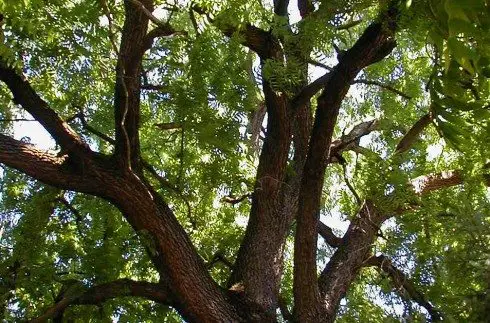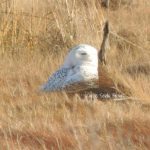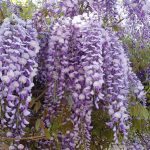Black Walnut trees (Juglans nigra), while prized for their wood, cause many plants growing under them to wither and die. Included here are suggestions for native plants that will thrive under your Black Walnut Trees
I received this question from one of my readers, and its a topic that will provide information to a large number of you, here are my thoughts:
We have an area that has a lot of walnut trees and can not get anything to grow around them or under them. What would be good plants or grass that would survive around these trees. We do not want to cut down our walnut trees, but would like to have something growing under them.
The Problem With Black Walnut Trees
Black Walnut trees (Juglans nigra) are in high demand for their beautiful wood and provide a plethora of nuts for squirrels, birds, and other wildlife (and also are edible for humans, too)
Black Walnut trees produce a chemical called juglone that inhibits many other plants from growing under them. These plants may wilt, turn yellow, and eventually die. Juglone is exuded from all parts of the tree, including the leaves, wood, fruits, and roots.
K Young sums up the problem:
People who are gifted with a black walnut tree have both an asset and a curse. The asset is a protein source that both you and your squirrels (and other animals) can enjoy. The curse is two-fold: like any nut or fruit tree, they can be messy. But their messiness is far outweighed by their ability to inhibit or kill other plants around them. Isnt that weird that plants can do that to each other? Walnuts are not alone in this skill set, they are just better at it than anybody else in the plant kingdom.
According to the Virginia Cooperative Extension:
Wet, poorly aerated soil, very common in many urban areas, discourages microbial growth. Plants sensitive to the walnut trees toxic effect may be at a higher risk when planted in heavy urban soils that lack organic matter. Toxins adhere to organic matter rather than being absorbed by plants, and organic matter also encourages a healthy soil microbial population.
So one of the very best things you could do to eliminate some of the problems facing plants growing under Black Walnut trees would be to add lots of organic matter to your soil. Working to create healthy soil will be a gift to your overall gardening efforts as well as providing habitat for wildlife and increasing the health of all of your plants.
Native Plants to Plant Under Black Walnut Trees
Heres some native plants to try out under your Black Walnut Trees:
- New Jersey Tea
- American Redbud
- Sassafras
- Elderberry
- Witch Hazel
- Serviceberry
- Native asters
- Native ferns
- Joe Pye
- Bee Balm
Heather Holm suggests these native plants that work in her MN wildlife garden:
I have a large black walnut in my yard and the following grow well under it: Nannyberry Viburnum, Red Osier Dogwood, Pennsylvania Sedge, Wild Ginger, Wild Geranium, Red Elderberry, Amercian Hazelnut, Hackberry, Chokecherry, False Solomons Seal, Solomons Seal, Downy Yellow Violet, Virginia Waterleaf
My friend Ursula Vernon recommends these native plants that work in her NC wildlife garden:
Appalachian sedgeCarex appalachiaworks, I think, along with most hardy fernsif theyve got sun under them, then serviceberry, New Jersey Tea, shrubby St. Johns wort, black-eyed susan, and probably-but-you-might-want-to-try-a-test-patch River Oats.
Actually, Id suggest a test patch of anything before investing in a huge plantingmuch like deer resistant theres occasionally some difference in the literature, and the sedges at least can be slow/expensive to gamble with.
Mr. Smarty Plants, of the Ladybird Johnson Wildflower Center has this great suggestion:
The best advice we can give you is to look around your neighborhood, see what is growing under walnut trees and talk to other gardeners who have black walnut trees in their yards.
More From Ecosystem Gardening:
Submit your review | |








